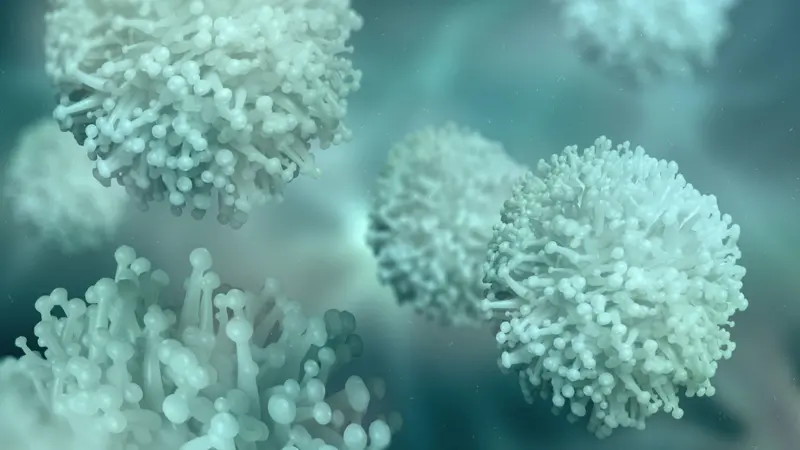

Planet and People Connection

Planet and People Connection
Can Genetically Modified Microbes Undermine the Health of Humans and the Environment?
Why on earth is a significant portion of human breast milk entirely indigestible by the nursing infant? Is this a design flaw?
Actually, it’s part of an incredibly intelligent system that evolved over millennia. Specialized sugars in mother’s milk are specifically designed not to be digested in the stomach or small intestine. They’re not meant to feed the baby at all. Rather, they are food for bacteria living inside the child’s large intestine (Zivkovic, 2011; Musilova, 2014; De Leoz, 2015; Pacheco, 2015; Yong, 2016; Bridgman, 2017; Ayechu-Muruzabal, 2018; Elsen, 2019).
The gut microbes are so important for the baby’s long-term health (Stanislawski, 2018; Vatanen, 2018), there’s a complex system in place for their installation and maintenance. This includes inoculation by healthy bacteria in the birth canal, by microbes in breast milk, and even by bacteria transferred from the mom’s skin around her nipple (Pannaraj, 2017; Science Daily, 2017; Mandavilli, 2019).
But it doesn’t stop there. Research suggests that microbes from the mouth of the nursing baby convey information to the mom about the baby’s health needs (Fernandez, 2013).
These are just a few of the breathtaking feats performed by the microbiome—the bacteria, viruses, yeasts, etc., that live in and on us. In fact, some experts estimate that humans have outsourced up to 90 percent of their day-to-day metabolic functions to these unseen kingdoms (Krishnan, n.d).
We are not the only creatures that co-evolved with these little critters. They are everywhere in the environment. And we are just now learning how critical they are for the balance and health of all ecosystems and their inhabitants (Merten, 2020).
The human microbiome is considered so crucial to human health that the National Institutes of Health launched the Human Microbiome Project in 2007 with the explicit goal of analyzing the genomes of all the microbes that live in the human body. By 2020, over 200,000 genomes from the human gut microbiome alone have been cataloged and published, along with 170 million protein sequences from 4,600 bacterial species (Science Daily, 2020).
However, more than 70% of these bacterial species had never been cultured in the lab. Their activity in the body is still unknown – a telling indicator of the richness and diversity of the human microbiome and the limitations of our knowledge about it. In addition, recent studies reveal that the human microbiome is quite susceptible to environmental effects and can undergo rapid changes due to outside influence (Vangay, 2018; Kaplan, 2019; Groussin, 2021).
The soil microbiome is at least equally and probably much richer and more diverse than the human microbiome. It represents the greatest reservoir of biological diversity in the world (Merten, 2020). It promotes soil fertility and plant health. Proponents of regenerative agriculture also rely on a healthy soil microbiome to do the heavy lifting for carbon sequestration – pulling excess carbon out of the atmosphere to counter the impact of climate change.
THE UNIQUE RISK OF GENETICALLY ENGINEERED MICROBES
For centuries, the way humanity altered the genome of living organisms such as crops and livestock was through natural breeding methods. The changes were limited by combinations and mutations that occur naturally through reproduction. With today’s genetic engineering technology, scientists can now create or insert entirely new DNA sequences, hoping to impart desired traits to the genetically modified organism (GMO).
Since its inception, however, the technology often resulted in unanticipated consequences, collateral damage to the genome and organism. Recent research shows that even the recently developed gene-editing methods can produce random genetic changes in a relatively uncontrollable manner (Davies, 2019; Teboul, 2020). A recent article described these substantial changes as “chromosomal mayhem” (Ledford, 2020).
This means that genetically modified microbes usually have unintended mutations, deletions, and additions that could impart unintended new traits. In addition, these unintended genetic elements can interact with the rest of the genome in unpredictable ways or make the genetically modified microbes more susceptible to further mutation (Kosicki, 2018; Farris, 2020). These genetically modified microbes can also interact with other microbes in the environment – in the microbiome – and transfer some of these novel genetic elements to them, potentially causing new complications (Davison, 1999; Hall, 2017).
Finally, microbes can move freely across national borders – they are invisible, and people can easily and unknowingly transfer them from one place to another by travel or transport of goods (Nature, 2017). It can be taken as a given in this day and age that a microbe existing in one locality will eventually spread globally. For the most part, this is not a problem – most microbes are harmless to us. However, if a genetically modified microbe were to be released in one part of the US, it would certainly spread everywhere unless drastic measures were taken to eradicate it entirely immediately after release. Even if the altered microbe were benign or beneficial in the environment where it was released, those traits could prove damaging or even disastrous in new ecosystems, including within the human body.
The microbial kingdoms are vital to our continued existence, and yet, we know relatively little about them and the exact role they play in this vastly complicated ecosystem. Millions of species exist symbiotically with humans – either in our bodies or in the soil. And yet, we don’t even possess a well-defined characterization of what a healthy microbiome looks like. We do know that even slight disruptions of the microbiome can have significant negative consequences, including disease and ecosystem collapse.
Genetic modification of microbes often results in random unwanted genetic alterations with unpredictable consequences, especially when interacting with other microbes. Therefore, when we consider releasing genetically modified microbes into the environment, we should consider this: how equipped are we to accurately evaluate the risks and the potential consequences? Today’s health and environmental risk analyses do not even account for the microbiome’s pivotal role, its complex relationships, or the tendency for microbes to travel and swap genetic material across species. But even if we tried to take all this into account, is our current knowledge sufficient to safely release genetically modified microbes that become a permanent part of nature’s gene pool?
Perhaps one day, we will have gathered sufficient knowledge about the microbiome to accurately predict the impact of new genetic combinations – inside us and around the planet. At that point, we will know with confidence, for example, that a genetically modified microbe designed to remediate soil in Iowa cornfields won’t interfere with the health of an infant’s microbiome on the other side of the planet.
In the meantime, what are we doing now to protect future generations? This question is long past due. Today, anyone can create gene-edited microbes with a cheap Do-It-Yourself kit purchased on Amazon. If they upgrade to a home lab, they can release new designer microbes every day.
Since microbes travel the world, laws governing releases should ultimately be global. But that effort needs to start somewhere and fast. Otherwise, our new technologies may be on a crash course with the kingdoms that give us life – and healthy babies.
REFERENCES
Ayechu-Muruzabal, V., van Stigt, A. H., Mank, M., Willemsen, L., Stahl, B., Garssen, J., & Van’t Land, B. (2018). Diversity of Human Milk Oligosaccharides and Effects on Early Life Immune Development. Frontiers in pediatrics, 6, 239. https://doi.org/10.3389/fped.2018.00239
Bridgman, S. L., Azad, M. B., Field, C. J., Haqq, A. M., Becker, A. B., Mandhane, P. J., Subbarao, P., Turvey, S. E., Sears, M. R., Scott, J. A., Wishart, D. S., Kozyrskyj, A. L., & CHILD Study Investigators (2017). Fecal Short-Chain Fatty Acid Variations by Breastfeeding Status in Infants at 4 Months: Differences in Relative versus Absolute Concentrations. Frontiers in nutrition, 4, 11. https://doi.org/10.3389/fnut.2017.00011
Davies, B. (2019). The technical risks of human gene editing. Human Reproduction, 34(11), pp.2104-2111.
Davison, J. (1999). Genetic exchange between bacteria in the environment. Plasmid, 42(2), pp.73-91
De Leoz, M. L., Kalanetra, K. M., Bokulich, N. A., Strum, J. S., Underwood, M. A., German, J. B., Mills, D. A., & Lebrilla, C. B. (2015). Human milk glycomics and gut microbial genomics in infant feces show a correlation between human milk oligosaccharides and gut microbiota: a proof-of-concept study. Journal of proteome research, 14(1), 491–502. https://doi.org/10.1021/pr500759e
Elsen L.W. J., Garssen J., Burcelin R., Verhasselt V. (2019). Shaping the Gut Microbiota by Breastfeeding: The Gateway to Allergy Prevention? Frontiers in Pediatrics. 7, 1-47. https://www.frontiersin.org/article/10.3389/fped.2019.00047
Farris, M.H., Texter, P.A., Mora, A.A. (2020). Detection of CRISPR-mediated genome modifications through altered methylation patterns of CpG islands. BMC Genomics 21, 856. https://doi.org/10.1186/s12864-020-07233-2
Groussin et al (2021). Elevated rates of horizontal gene transfer in the industrialized human microbiome, Cell, March 30, https://doi.org/10.1016/j.cell.2021.02.052
Hall, J.P., Brockhurst, M.A. and Harrison, E. (2017). Sampling the mobile gene pool: innovation via horizontal gene transfer in bacteria. Philosophical Transactions of the Royal Society B: Biological Sciences, 372(1735), p.20160424
Kaplan, R.C., Wang, Z., Usyk, M., Sotres-Alvarez, D., Daviglus, M.L., Schneiderman, N., Talavera, G.A., Gellman, M.D., Thyagarajan, B., Moon, J.Y. and Vázquez-Baeza, Y. (2019). Gut microbiome composition in the Hispanic Community Health Study/Study of Latinos is shaped by geographic relocation, environmental factors, and obesity. Genome biology, 20(1), p.219
Kosicki, M., Tomberg, K. & Bradley, A. (2018). Repair of double-strand breaks induced by CRISPR–Cas9 leads to large deletions and complex rearrangements. Nature Biotechnology 36, 765–771 . https://doi.org/10.1038/nbt.4192
Krishnan, K, Quoted in The Better Behavior Show, Podcast by Nicole Beurkens, Episode 18 How the Gut Affects Behavior in Children. Undated.
Ledford, H. (2020). CRISPR gene editing in human embryos wreaks chromosomal mayhem. Nature, 583 (7814), pp.17-18.
Mandavilli, A. (2019). Breast Milk Is Teeming With Bacteria — That’s Good for the Baby. The New York Times. https://www.nytimes.com/2019/06/12/health/breastmilk-microbiome-parenting.html
Merten, C., Schoonjans, R., Di Gioia, D., Peláez, C., Sanz, Y., Maurici, D. and Robinson, T. (2020). Exploring the need to include microbiomes into EFSA’s scientific assessments. doi: 10.2903/j.efsa.2020.e18061
Musilova, S., Rada, V., Vlkova, E., & Bunesova, V. (2014). Beneficial effects of human milk oligosaccharides on gut microbiota. Beneficial microbes, 5(3), 273–283. https://doi.org/10.3920/BM2013.0080
Nature (2017). Resistance to last-ditch antibiotic has spread farther than anticipated, https://www.nature.com/news/resistance-to-last-ditch-antibiotic-has-spread-farther-than-anticipated-1.22140, doi:10.1038/nature.2017.22140
Pacheco, A. R., Barile, D., Underwood, M. A., & Mills, D. A. (2015). The impact of the milk glycobiome on the neonate gut microbiota. Annual review of animal biosciences, 3, 419–445. https://doi.org/10.1146/annurev-animal-022114-111112
Pannaraj, P. S., Li, F., Cerini, C., Bender, J. M., Yang, S., Rollie, A., Adisetiyo, H., Zabih, S., Lincez, P. J., Bittinger, K., Bailey, A., Bushman, F. D., Sleasman, J. W., & Aldrovandi, G. M. (2017). Association Between Breast Milk Bacterial Communities and Establishment and Development of the Infant Gut Microbiome. JAMA pediatrics, 171(7), 647–654. https://doi.org/10.1001/jamapediatrics.2017.0378
Savage, J. H., Lee-Sarwar, K. A., Sordillo, J. E., Lange, N. E., Zhou, Y., O’Connor, G. T., Sandel, M., Bacharier, L. B., Zeiger, R., Sodergren, E., Weinstock, G. M., Gold, D. R., Weiss, S. T., & Litonjua, A. A. (2018). Diet during Pregnancy and Infancy and the Infant Intestinal Microbiome. The Journal of pediatrics, 203, 47–54. https://doi.org/10.1016/j.jpeds.2018.07.066
Science Daily, (2017). Breast-feeding’s role in ‘seeding’ infant microbiome: Nearly one-third of beneficial bacteria in baby’s intestinal tract comes directly from mother’s milk. https://www.sciencedaily.com/releases/2017/05/170508112411.htm
Science Daily, (2019). Babies’ gut bacteria affected by delivery method. https://www.sciencedaily.com/releases/2019/09/190918131447.htm
Science Daily, (2020). Unparalleled inventory of the human gut ecosystem, https://www.sciencedaily.com/releases/2020/07/200727114743.htm
Stanislawski, A., Dabelea, D., Wagner, B., Iszatt, N., Dahl, C., Sontag, M., Knight, R., Lozupone, C., Eggesbø, M. (2018). Gut Microbiota in the First 2 Years of Life and the Association with Body Mass Index at Age 12 in a Norwegian Birth Cohort. mBio. 9 (5), 1-14. https://mbio.asm.org/content/9/5/e01751-18
Teboul, L., Herault, Y., Wells, S., Qasim, W. and Pavlovic, G. (2020). Variability in genome editing outcomes: challenges for research reproducibility and clinical safety. Molecular Therapy, 28(6), pp.1422-1431.
Vangay, P., Johnson, A.J., Ward, T.L., Al-Ghalith, G.A., Shields-Cutler, R.R., Hillmann, B.M., Lucas, S.K., Beura, L.K., Thompson, E.A., Till, L.M. and Batres, R., (2018). US immigration westernizes the human gut microbiome. Cell, 175(4), pp.962-972;
Vatanen, T., Franzosa, E. A., Schwager, R., Tripathi, S., Arthur, T. D., Vehik, K., Lernmark, Å., Hagopian, W. A., Rewers, M. J., She, J. X., Toppari, J., Ziegler, A. G., Akolkar, B., Krischer, J. P., Stewart, C. J., Ajami, N. J., Petrosino, J. F., Gevers, D., Lähdesmäki, H., Vlamakis, H., Xavier, R. J. (2018). The human gut microbiome in early-onset type 1 diabetes from the TEDDY study. Nature, 562(7728), 589–594. https://doi.org/10.1038/s41586-018-0620-2
Yong, E. (2016). Breast-Feeding the Microbiome. The New Yorker.
https://www.newyorker.com/tech/annals-of-technology/breast-feeding-the-microbiome
Zivkovic, A. M., German, J. B., Lebrilla, C. B., & Mills, D. A. (2011). Human milk glycobiome and its impact on the infant gastrointestinal microbiota. Proceedings of the National Academy of Sciences of the United States of America, 108 Suppl 1(Suppl 1), 4653–4658. https://doi.org/10.1073/pnas.1000083


 By
By



